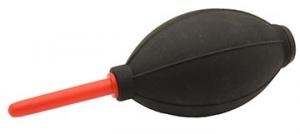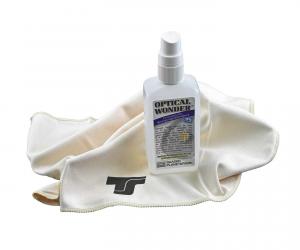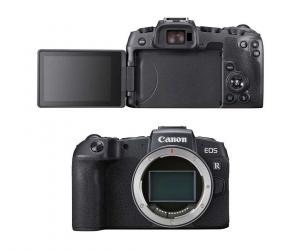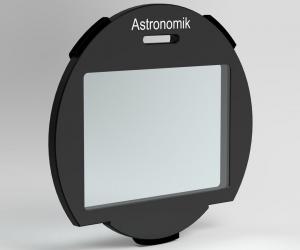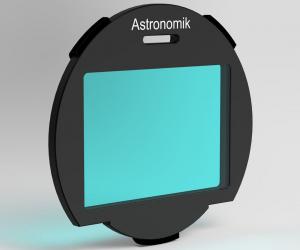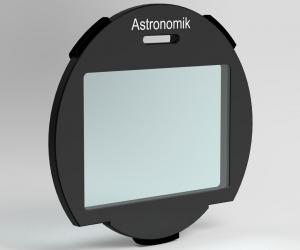- Telescopes
- Overview:
Telescopes - Achromatic Refractor
- Apochromatic Refractor
- Overview:
Apochromatic Refractor - ED Refractor - less color aberration than an achromatic
- SD APO - color free 2-element APO objective
- EDT APO - 3 element ED objective
- High End APO with 3-element APO objective - no color aberation
- Flatfield APO with flat field for Astrophotography
- All Apos and EDs from all manufacturers - large overview
- TS APO and ED from Japan with high quality optics
- Overview:
- Newtonian Telescopes
- Dobsonian Telescopes
- RC Ritchey Chretien Telescopes
- Casssegrain Telescopes
- Reflektor Telescopce with Lens Correcture
- Maksutov Cassegrain Telescopes
- GoTo Telescopes
- Solar Telescopes H-Alpha
- Overview:
- Mounts Tripods Rings Rails Power Supply ...
- Overview:
Mounts Tripods Rings Rails Power Supply ... - Mounts Equatorial with GoTo
- Mounts Equatorial without GoTo
- Mounts Azimutal with GoTo
- Mounts Azimutal without GoTo
- Mounts GoTo - Harmonic Drive
- Travel mounts for astro imaging
- Tripods Piers Polar Wedges
- Mount Control & Electronics
- Dovetail Clamps, Plates and Mount Adapters
- Tube Rings
- Power Supply
- Counterweights Balance Weights
- Mount Accessories - Other
- Overview:
- Telescope Accessories
- Overview:
Telescope Accessories - Eyepieces
- Barlows & Reducer Lenses
- Diagonal Mirrors and Prisms
- Binocular Viewers
- Finder Scopes
- Telescope Collimation and Test
- Cleaning Tools
- Transport and Storage
- Dust protection for Telescopes & Accessories
- Stray Light Protection
- Dewcaps and Heater
- Focusers, Adapters, Motorfocus
- Telescope DIY & Improvement
- Other telescope accessories
- Replacement Parts
- Overview:
- Filters
- Overview:
Filters - Color Filters and Color Filtersets
- Nebular Filters for Visual Observing
- Neutral-Density and Polfilter
- Photo Narrowband Nebular Filters
- Photo Broadband Filters
- Photo Planetary Filters
- Photo R-G-B and IR Cut Filters
- Photo - Filtersets
- Photometric Filters
- Clip Filter for DSLR Cameras
- Filter Wheels and Filterslider
- Solar Filters for white light
- Solarfilter for H-Alpha and Calcium
- Overview:
- Adaptors
- Overview:
Adaptors - Adapter 1,25" and 24,5mm
- Adapter 2"
- Adapter T2 - M42x0.75
- Adapter M48x0,75
- Adapter M54
- Adapter SC
- Adapter M63
- Adapter M68
- Adapter to other Threads
- Adapter Extensions
- Adapter camera bayonet
- Adapter Objective Filterthread
- Adapter Quick Changing , Rotation
- Adapter Eyepiece Projection
- Adapters Tilting
- Overview:
- Astrophotography and Photography
- Overview:
Astrophotography and Photography - Cooled Cameras
- Cameras without Cooling
- Deep-Sky Cameras uncooled
- Set-Offers Camera, Filter, Wheels
- Acessories for Cameras
- Travel mounts for astro imaging
- Imaging Correctors for Telescopes
- Autoguiding Cameras & Sets
- Everything for Guiding
- Focusing aids - Bahtinov mascs
- Flat Field foils and boxes
- Lenses for Cameras
- Piggyback Camera Holder
- Camera Bags, Photocases & more
- Digital Camera and Smartphone Adapter
- Other photo accessories
- Overview:
- Binoculars, Spotting Scopes, Microscopes, Range Finders
- Overview:
Binoculars, Spotting Scopes, Microscopes, Range Finders - Spotting Scopes and Acessories
- Roof Prism Binoculars
- Binoculars with Porro prisms
- Binoculars from 100mm Aperture
- Binoculars with 1,25 inch eyepieces
- TSMX APO Binoculars
- Binoculars for Astronomy
- Binoculars Hiking Bird watching
- Monoculars - Opera Binoculars
- Accessories for Binoculars
- Range Finders
- Microscopy
- Bags for Phototripods & Binoculars
- Overview:
- Phototripods and Binomounts
- Books, Software
- Overview:
Books, Software - Books for Astronomy Beginners
- Star Charts and Planispheres
- Books about our Solar System
- Observing Tips for Amateurs
- Popular Astronomy Literature
- Teaching material
- Astrophotography books
- Telescopes, Observatories, Construction
- Calendars Yearbooks
- Software, Star Charts
- Books for Microscopers
- Books Nature and Animals
- Nature Photography TimeLapse
- Overview:
- Night Vision, Magnifiers, Weather, Domes & more
- Beginner Astronomy and Gift Ideas
- Second Hand & Special Offers
- New products
Manufacturer: Astronomik Filter
Product number: 8H11GS
EUR109.00new
EUR 109,00
incl. 19 % VAT (DE)
The VAT indicated refers to that applicable in Germany. After logging in, the VAT amount is adjusted to the applicable VAT of the stored delivery country. Therefore, the final price may vary accordingly.
excl. 6.95 € shipping costs (DE)
more details to the shipping costs ...Please log in to calculate shipping costs to your country.
There are no reviews for this product
- Details..
- Technical data..
- In the box..
- Manufacturer infos..
- Safety informations..
Astronomik XL Clip Filter for mirrorless Full-frame Cameras Canon EOS R and RP
This "filter" lets the whole spectrum pass, works therefore as dust protection and can be inserted into the camera body within seconds. It is especially helpful for cameras whose built-in filter has been removed and where the light path is therefore no longer correct - without a filter you will have problems focusing.The filter is a fine-optically polished and multicoated special glass. The glass has no filter effect, it blocks neither IR nor UV.
{Alternatives:}]If you want to protect the camera, which has been modified by removing the built-in filter, not only from dust but also from UV and IR again because of its exclusive use in visible light, we recommend one of the L-filters (item 8H11GF or 8H11GG).
The use of an astro-modified camera for daylight photography works without color change when using an OWB filter (item 8H11GR).
Compatibility:
Canon cameras EOS R/R5/R5/RP/Ra (the latter can show strong reflections around bright stars)Not compatible with Canon RF 35 mm f/1.8 IS MACRO lens.
Application:
Mounting the Astronomik EOS R XL Clip Filter:Mounting the Astronomik EOS R Clip Filter is very easy: You don´t need any tools and filters may be changed even at night without any problems.
Remove the lens and take the Clip Filter from its box. Insert the Clip-Filter into the body and push it in with two fingers, until it rests neatly. Re-install the lens and your camera is ready for imaging!
Removing the Astronomik EOS R XL Clip Filter:
A small hook is included for easy disassembly of the clip filter. Insert the hook into the slot in the clip filter and pull the clip filter forward out of the body.
Grab it with two fingers and put it back in the storage box. After attaching the lens, the camera can be used as usual.
The transmission curve:

At 656 nm is the known H-alpha emission line of hydrogen, around 500 nm the two [O III] lines of oxygen, at 486 nm the H-beta line of hydrogen, around 672 nm the two [S II] lines of sulfur. The square brackets indicate that these are forbidden lines.
A short guide for selecting the right filter
Lots of customers are overwhelmed by the vast number of filters offered by Astronomik. Due to that they give you a short guide how to select the right filter for your application below:Astronomik´s normal recommendation for the "First Filter" is the CLS filter. The CLS blocks all unwanted artifical light pollution and natural airglow and gives you a dark background in your images. When using this filter you may expose much longer than without, so you will be able to pick much fainter structures and objects. The filter is designed in such a way that all objects are given in their natural colors - they would look the same if your human eye would be much more sensitive!
The CLS is the fist choice for any applications like night-scape photography and time lapse movies!
Important: The standard CLS has no built-in IR-blocker. In case your camera has been modified for astrophotography, please take the CLS-CCD which has a built-in IR-blocker!
If you have to work under a heavily light polluted sky, the UHC is a good choice too. Its transmission curve is very tight. It gives you the light from the Hß, [O III], Hα and [S II] lines in one single exposure. The reduction of light pollution is much stronger than the CLS/CLS-CCD, but the filter will work for gas nebulas only - any galaxies and open or globular clusters are filtered out! You will get "false colors" with the UHC, not natural colors like with the CLS/CLS-CCD.
The UHC-E has a more broadband light transmission. Here stars are less strongly suppressed, helpful for nebulae with star clusters.
If you want to die deeper into astrophotography, you should think about emission line filters centered on OIII, H-alpha and SII, available either with 12 nm or even 6 nm bandwidth. With these filters you can do ultra-deep images even under the worst sky you can imagine plus the full moon high up in the sky. The emission line filters isolate the light from a very tight range of wavelengths, don´t get any color information. If you want to create color images (false color like images from the HST), you will need all three filters to mix the three channels into a final color image.
When using DSLR cameras without IR cut filter in astronomy, we recommend the UV-IR block filters of the L-1, L-2 and L-3 series to correct chromatic aberrations when using refractive optics (camera lenses, refractors). Depending on the color correction of your scope you may use a wider spectral window for the luminance data. The L1 filter has the widest spectral window, the L2 is about the same as our current L-Filter and the L3 is much narrower.
If you use an optical system that is more or less free of chromatic aberration you should get an L1 filter for your setup. For general use the L2 filter is well suited to most optical systems with a corrector, flattener or reducer in the optical train while the L3 filter is designed for users of refractors with a less-than-perfect color correction.
As protection against dust in DSLR cameras without IR cut filter, the MC clear glass filter is suitable. It blocks neither visible light nor UV or IR, but is parfocal with the other clip filters for Canon EOS R/RP full-frame cameras.
Especially made for planetary imaging are the ProPlanet IR pass filters. The IR light transmitted by them is less sensitive to air turbulence ("seeing"), which makes the images sharper, with increasingly longer wavelengths being increasingly less affected.
| Transmission: | 97-99.7% in the visual range |
| UV and IR blocking: | no |
| Substrate: | Precision polished optical glass |
| Substrate thickness: | 1 mm |
| Antireflective coating: | Completely resistant against high humidity, scratches and aging effects |
| Inserting and removing: | within seconds |
| Camera and lens funtions: | unaffected |
| Manufacturer / Importeur: | Vesting e.K. |
| Street: | Storchenweg 6 |
| ZIP / City: | 21217 Seevetal |
| Country: | Germany |
| Telefon number: | +49 40 5114348 |
| Email: | astro@astro-shop.com |
| Website: | www.astro-shop.com |
Safety informations: PDF Download
Recommended accessories
Cleaning & Collimating
Customers who bought this product also bought...
Reviews








